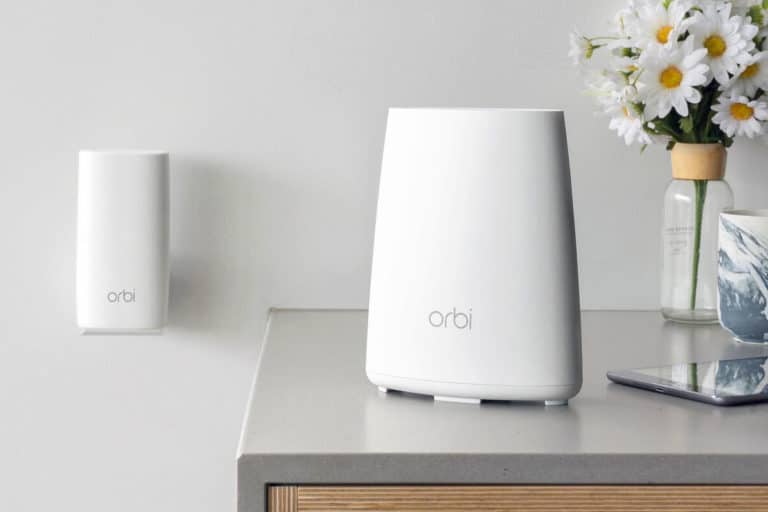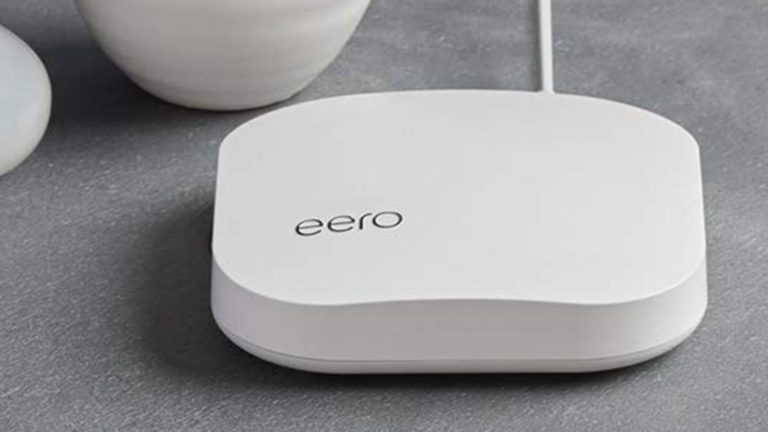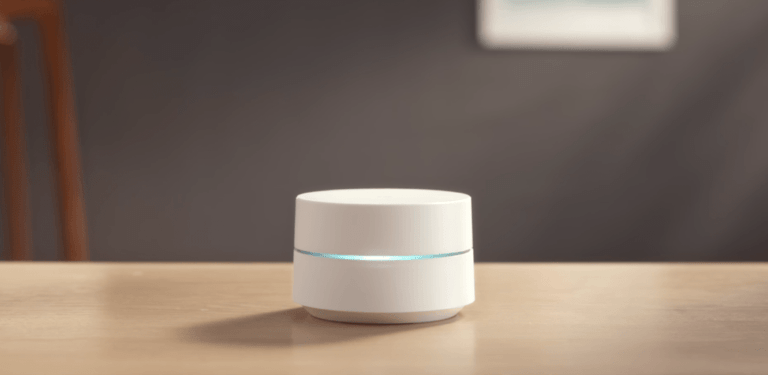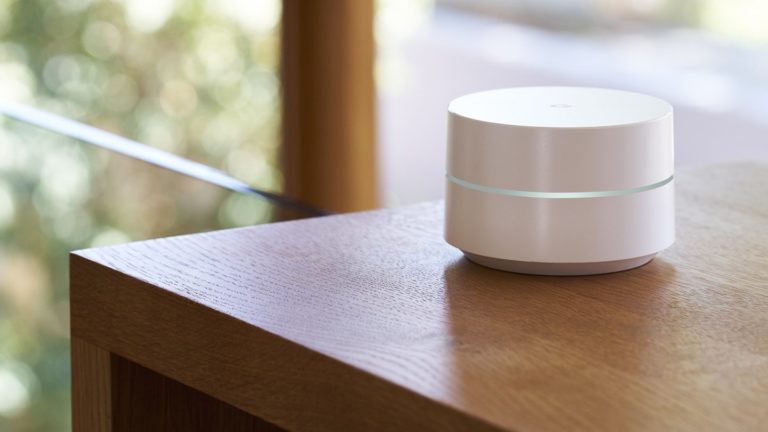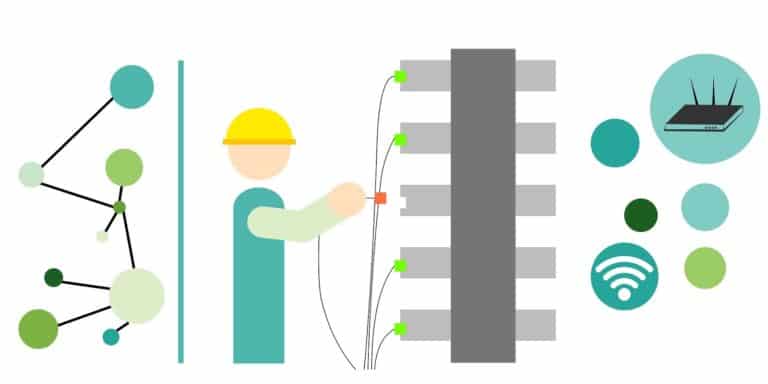Wi-Fi 5 vs Wi-Fi 6: Is there a big difference at all?
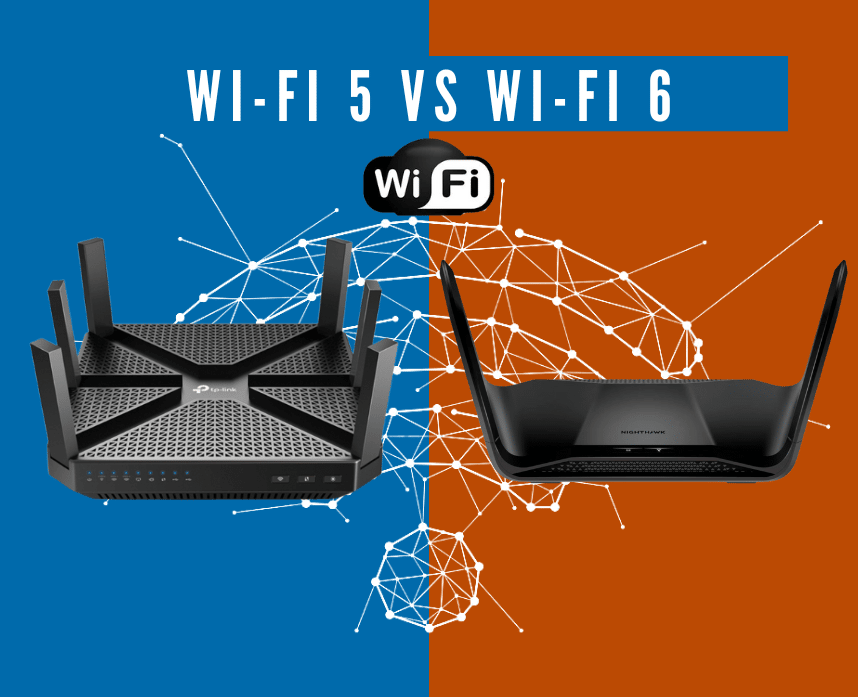
There’s only one way for technology to go, and that’s “forward.” So with Wi-Fi 6 and 6E taking over, you might wonder if it’s a big deal for every device and home. Or is there any difference at all?
The short answer is yes. Wi-Fi 6 offers faster speeds and more promising advanced wireless technology.
In this article, we’ll compare the two wireless standards. We’ve also provided a list of devices compatible with each standard! Let’s go
Table of Contents
What’s Wi-Fi 5?
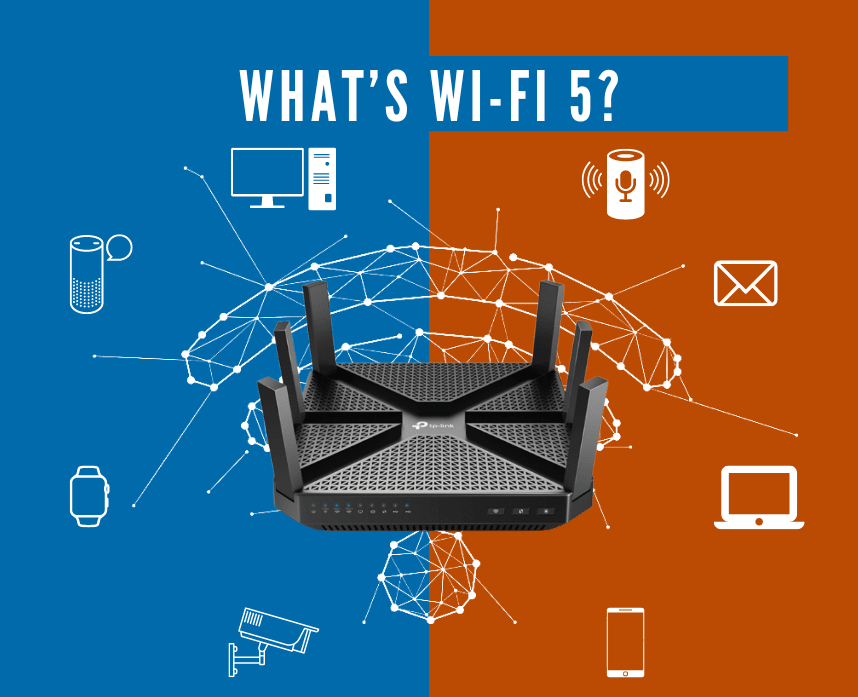
Wi-Fi 5 (802.11ac) is the 5th generation of Wi-Fi standards. Its theoretical speeds go as fast as 200 Mbps to 6.9 Gbps.
But where did this come from?
Instead of calling WiFi generations by its standard (IEEE 802.11), the Wi-Fi Alliance made remembering things easier by going for the generation names.
Wi-Fi 5 first came out in mid-2013 with a Wave 1 certification. 802.11ac products that came out with a Wave 1 certification support the following:
- Backward compatibility for older devices
- 5GHz band supports 20, 40, and 80 MHz channels
- Faster and lag-free 5GHz band
- 8-9 devices can use the 40MHz channels
- 4-5 devices can use 80MHz channels as long as they’re not overlapping
- Businesses can use 256 QAM for HD video streaming and other business-related online activities
- Supports 3×3 SU-MIMO
- WPA2 Security
- WMM Quality-of-Service (QoS)
- Power management
Then in 2014, Wave 2 already came out. With Wave 2, 11ac devices now support 4×4 QSR1000 chipset. Then in 2015-2016, Wave 2 devices finally hit and peaked in the market.
In the same wave, Wi-Fi 5 products got the following advanced features:
- 2×2 MU-MIMO (Multi-user, Multi-Input, Multi-Output)
- Use up to 8×8 antennas
- Support 4 data streams
- Beamforming
- 80+80 and 160 MHz channels
Additionally, with Wave 2, 802.11ac devices can freely use the 5GHz band.
Even now, the world is still saturated with 11ac compatible devices. This is especially true for businesses that own old-model equipment and appliances.
802.11ac device list
Most existing devices support Wi-Fi 5 since it’s been out for a long time. Most probably, your current phone or Macbook still supports 802.11ac.
So here are some of the most recent devices that support 802.11ac.
| ROUTERS AND MESH SYSTEMS | CELLPHONES | LAPTOPS |
| TP-Link AC1900 TP-Link AC1750 Asus AC2900 Asus RT-AC88U Asus ROG Rapture GT-AC5300 | iPhone X OnePlus 5T Samsung Galaxy A5 Huawei P20 Huawei P20 Pro Google Pixel 2 Lenovo Z5 | Lenovo IdeaPad Flex 3 Acer Chromebook Spin 513 Asus TUF Gaming A15 Gaming Laptop Macbook |
What’s Wi-Fi 6?
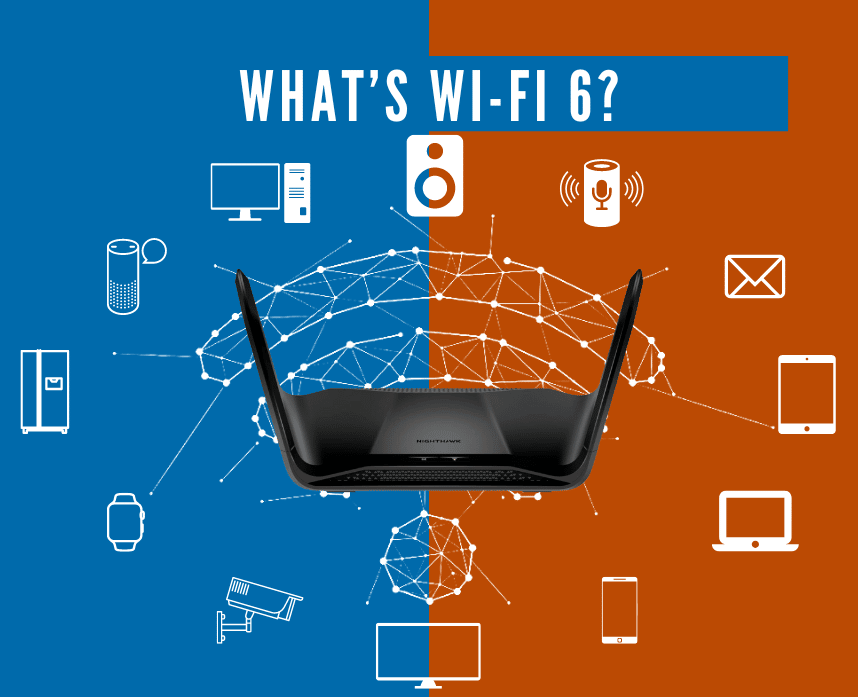
Wi-Fi 6 (802.11ax) is the 6th generation standard. Theoretically, its speeds can go from 600 Mbps to 9.6 Gbps.
It’s the most recent Wi-Fi generation, along with Wi-Fi 6E. It’s highly efficient, and it promises lightning-fast speeds.
Wi-Fi 6 came out in 2018 and fully peaked in 2019. 802.11ax devices are also backward compatible. So you won’t have to worry if you have devices that support previous standards. They can still fully operate under this WiFi standard.
But what sets 11ax apart from 11ac? Well, it’s not just about speed. It’s also about efficiency and stability.
Wi-Fi 6 still carries some features from previous generations. But some of them are more advanced and more efficient for all devices. It supports the following:
- 4×4 MU-MIMO
- Orthogonal Frequency Division Multiple Access (OFDMA)
- Overlapping Basic Service Sets (OBSS)
- Beamforming
- WPA3
- Longer battery life
- Target Wake Time (TWT)
- Simultaneous Authentication of Equals (SAE)
Although beamforming and MU-MIMO aren’t entirely ‘new’ features, they’re now more advanced with Wi-Fi 6.
Additionally, OFDMA and OBSS make wireless communication faster and more effective. These technologies help in clearing out space on congested networks.
So you’d get a stabler and smoother internet experience, whether streaming or gaming.
802.11ax device list
If you’re wondering if your device supports Wi-Fi 6, we got you! Here are some of the most popular devices that currently support 802.11ax:
| ROUTERS AND MESH SYSTEMS | CELLPHONES | LAPTOPS |
| Eero Pro 6 Eero 6 Eero 6+ TP-Link AX5400 TP-Link AX11000 TP-Link AX6000 Asus RT-AX88U Asus RT-AX86U Netgear Orbi | iPhone 11 series (11, 11 Pro , 11 Pro Max) iPhone 12 series (12, 12 Pro, 12Pro Max) iPhone SE iPhone 13 series (13, 13 Pro, 13 Pro Max) Samsung Galaxy S10 and S10E Samsung Galaxy Note10 Galaxy S20 Huawei P40 Pro | Lenovo Yoga C940 Asus Chromebook Flip Dell XPS 13 LG Gram 17 |
Most routers and devices manufactured in 2019 and onwards support 802.11ax. Check out our list of best WiFi 6 access points. You can also get access points for outdoor use.
What’s the difference between Wi-Fi 5 and Wi-Fi 6?
When WiFi was released, everyone was just happy that they could connect to the internet. But what does it actually mean for you?
Well, it means a LOT. If you want to enjoy the lightning-fast speeds, Wi-Fi 6 has to offer, you need the right devices for it.
So here is a closer look at the differences between the two.
Wi-Fi standard name
Wi-Fi 5’s standard name is IEEE 802.11ac. Then, for Wi-Fi 6, it’s 802.11ax.
The WiFi Alliance changed the names for marketing purposes. But knowing the standard names is important when buying new devices, especially routers and modems.
So when you see router names like the TP-Link AX1800, this router supports Wi-Fi 6, and its maximum throughput is 1800 Mbps.
It’s the same thing for routers with ‘AC’ in their names, like TP-Link AC1900. It means this router supports Wi-Fi 5 and max speeds of up to 1900 Mbps.
Security Protocols
Wi-Fi 5 uses Wi-Fi Protected Access 2 (WPA 2) for its security protocols. It was released in 2004 and is more secure than its predecessors, WEP and WPA protocols.
In comparison to WEP and WPA, WPA2 uses the AES standard. Since it was mandated in 2018, WPA2 also supports Protected Management Frames (PMF) for tighter security.
Meanwhile, Wi-Fi 6 uses the most recent WPA3. WPA3 offers way more security as it fixes the shortcomings and vulnerabilities of WPA2.
WPA2 is very vulnerable to KRACK. So WPA3 comes to the rescue with Simultaneous Authentication of Equals (SAE), also known as the Dragonfly Key Exchange.
The Dragonfly Key Exchange resists dictionary attacks. It also allows the WPA3 to provide forward secrecy. So eavesdroppers and hackers can’t snoop into your home network.
On top of that, WPA3 also supports the following:
- Opportunistic Wireless Encryption (OWE)
- Device Provisioning Protocol (DPP)
- Long Encryption Keys
So, between WPA2 vs WPA3, you should opt for the more secure WPA3 protocol.
Battery life
Wi-Fi 6 helps to extend your device’s battery life with its Target Wake Time (TWT) technology. TWT allows your devices to get longer sleep time when you’re not using your Wi-Fi.
It communicates with your devices and puts your Wi-Fi channels to sleep when you’re not actively using them. This feature lets you have longer battery life and regulates your power consumption over time.
So if your phone buzzes with notifications when you open it in the morning, even though you left the Wi-Fi on, that’s the TWT doing its magic.
Unfortunately, 802.11ac doesn’t offer this feature. So basically, you’d have higher power consumption.
Speeds
Let’s put it to rest: Wi-Fi 6 offers better speeds than Wi-Fi 5. It supports higher max throughput, and its Quadrature Amplitude Modulation (QAM) modulation is also higher.
802.11ac uses 256-QAM, and its theoretical max throughput goes up to 6.9 Gbps. However, the average speed of 11ac only goes up to 200 Mbps, which is significantly lower than the 11ax.
As for Wi-Fi 6, it uses 1024 QAM modulation, and its max throughput goes up to a whopping 9.6 Gbps. It enhances the overall network performance, so your mobile devices and other smart home devices can get optimum speeds.
The thing is, it’s not just about the theoretical speeds. 11ax can manage connected devices more efficiently because of its advanced techs like MU-MIMO and OFDMA. That’s why it can send faster and more stable internet connections than Wi-Fi 5.
OFDM vs OFDMA
Wi-Fi 5 uses Orthogonal Frequency Division Multiplexing (OFDM), which is a network access control technology.
It controls the number of connected devices that tries to use a subcarrier at a specific time. It limits how many users can access the internet at a specific time.
11ac standards have the following frequencies:
- 20 MHz
- 40 MHz
- 80 MHz
- 160 MHz
Then it also has the following subcarriers:
- 64
- 128
- 256
- 512
Because of the limited subcarriers available at a given time, the 11ac is prone to traffic congestion. At some point, it’s also laggy and relatively slow.
However, WiFi 6 uses OFDMA (Orthogonal Frequency-Division Multiple Access (OFDMA). It’s more efficient than its predecessor because it controls the number of users at a given time and frequency.
This means connected devices don’t need to wait for a specific time to access the internet. OFDMA looks for a free frequency/subcarrier that clients can connect to.
With OFDMA, the number of subcarriers per channel is multiplied by 4! So the 802.11ax standard has the following subcarriers:
- 256
- 512
- 1,204
- 2,048
OFDMA ensures there’s less data congestion. Additionally, this increases speed and efficiency, plus it reduces latency.
Is getting Wi-Fi 6 worth it?
Getting WiFi 6 is definitely worth it. Considering its security protocols and data speeds, it’s worth the investment.
We understand that upgrading your devices can be expensive. But, given that the technology is fast-pacing and ever-changing, 802.11ax devices are surely worth every penny.
The Bottomline
WiFi 6 is quickly taking over the world with its fast and secure network features. Surely, between Wi-Fi 5 vs Wi-Fi 6, there are a lot of significant changes that could improve your overall browsing experience.
Wi-fi 6 offers faster speeds, more robust security protocols, and more advanced technology. So getting 802.11ax for your home is one of the best decisions. After all, building your smart home of the future starts with one step at a time.
Wi-fi 6 offers faster speeds, more robust security protocols, and more advanced technology. So getting 802.11ax for your home is one of the best decisions to make. After all, building your smart home of the future starts with one step at a time.
Related Articles:

